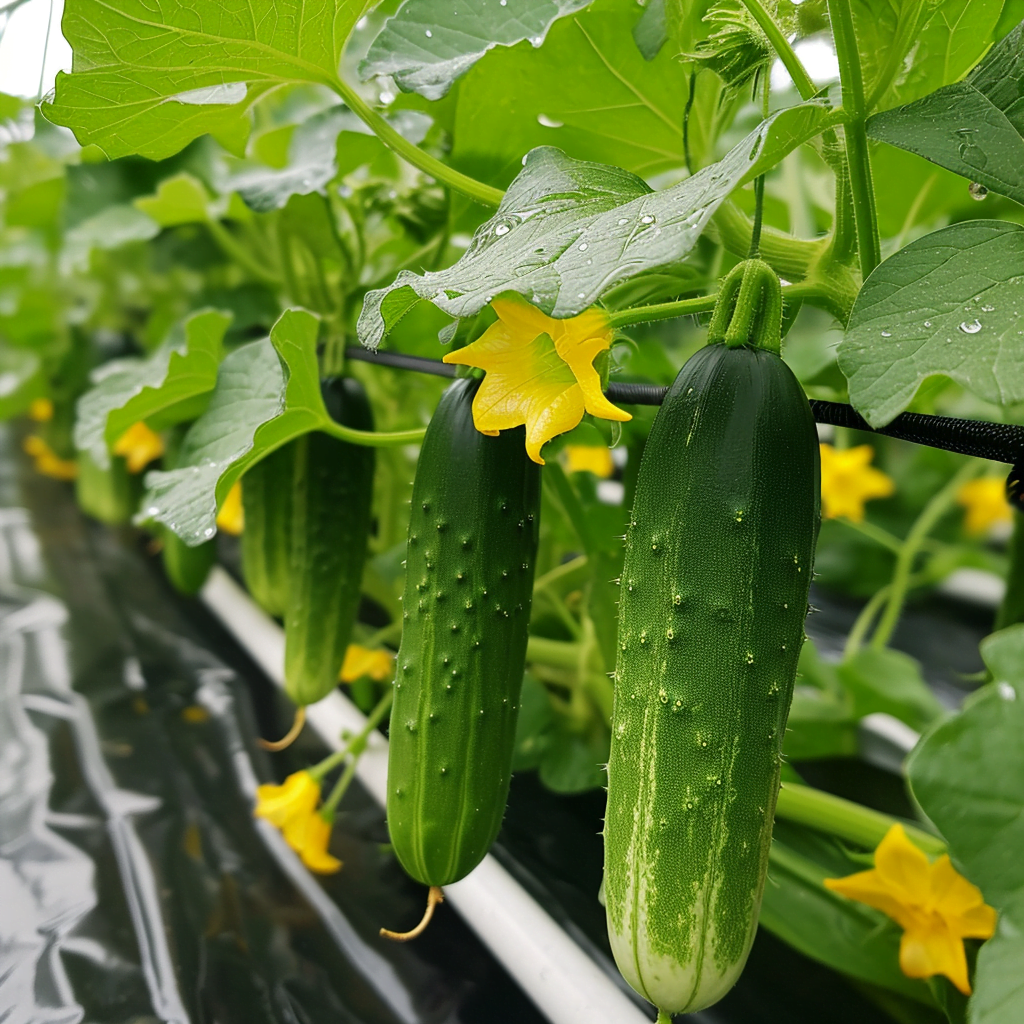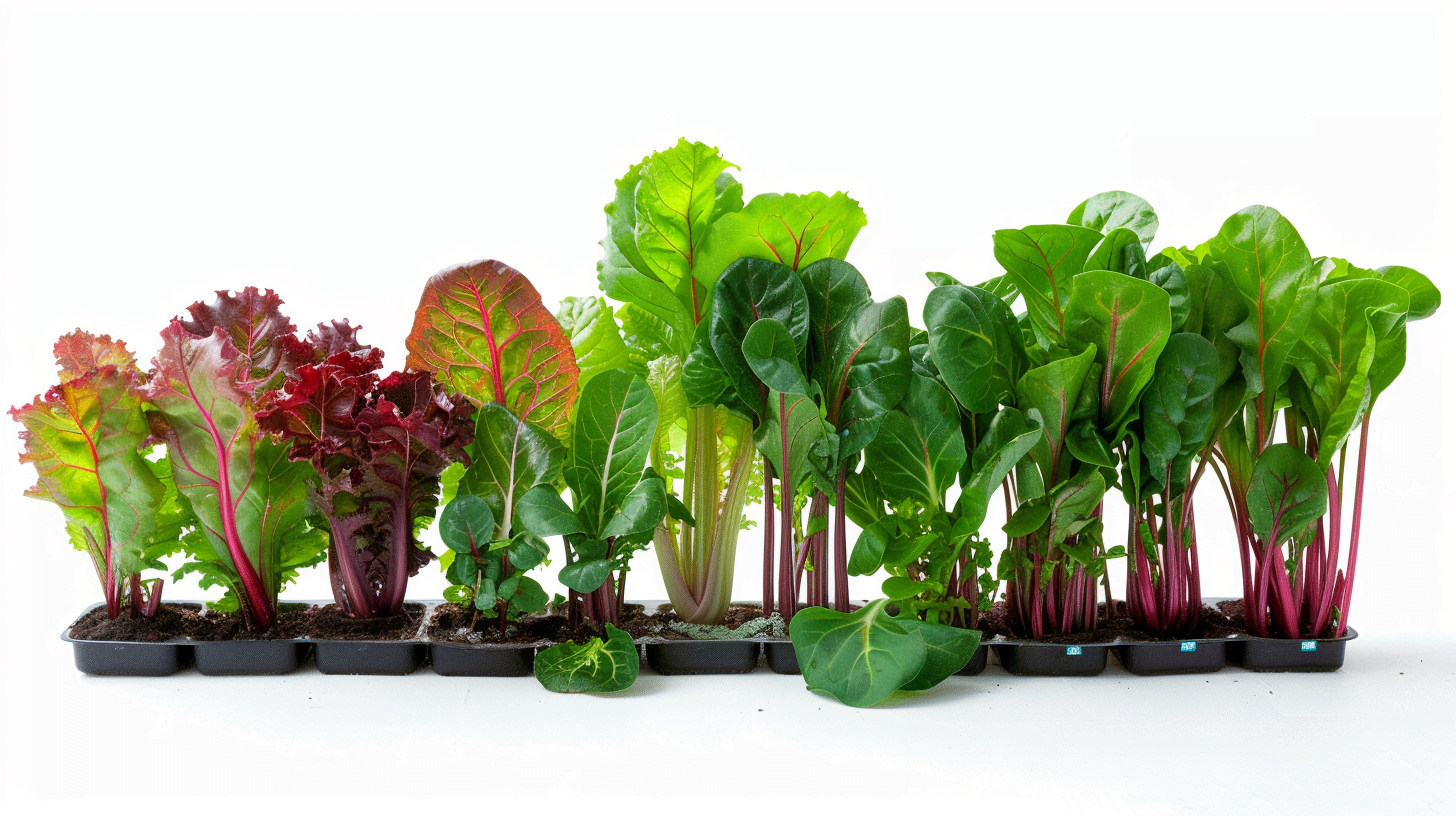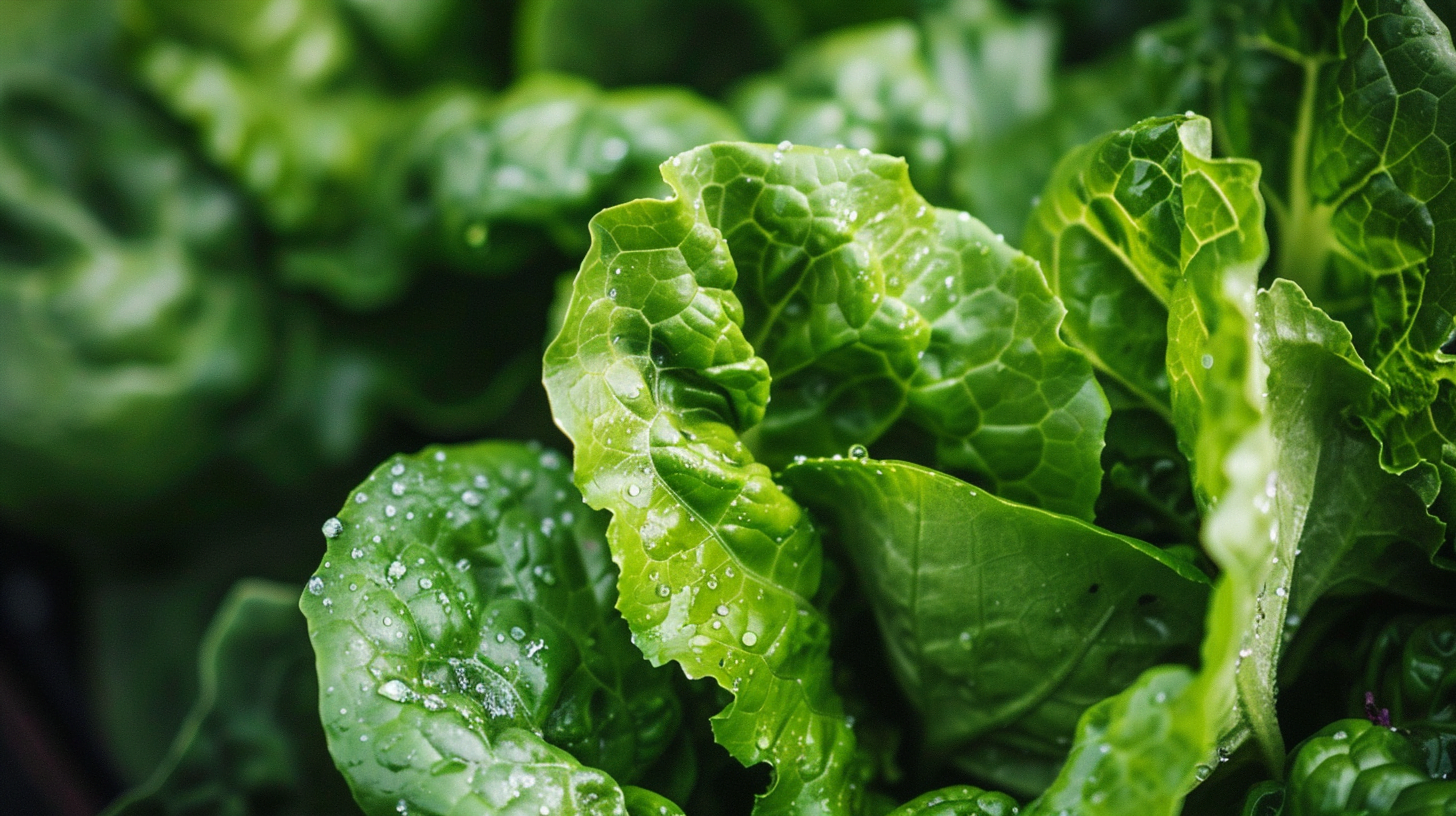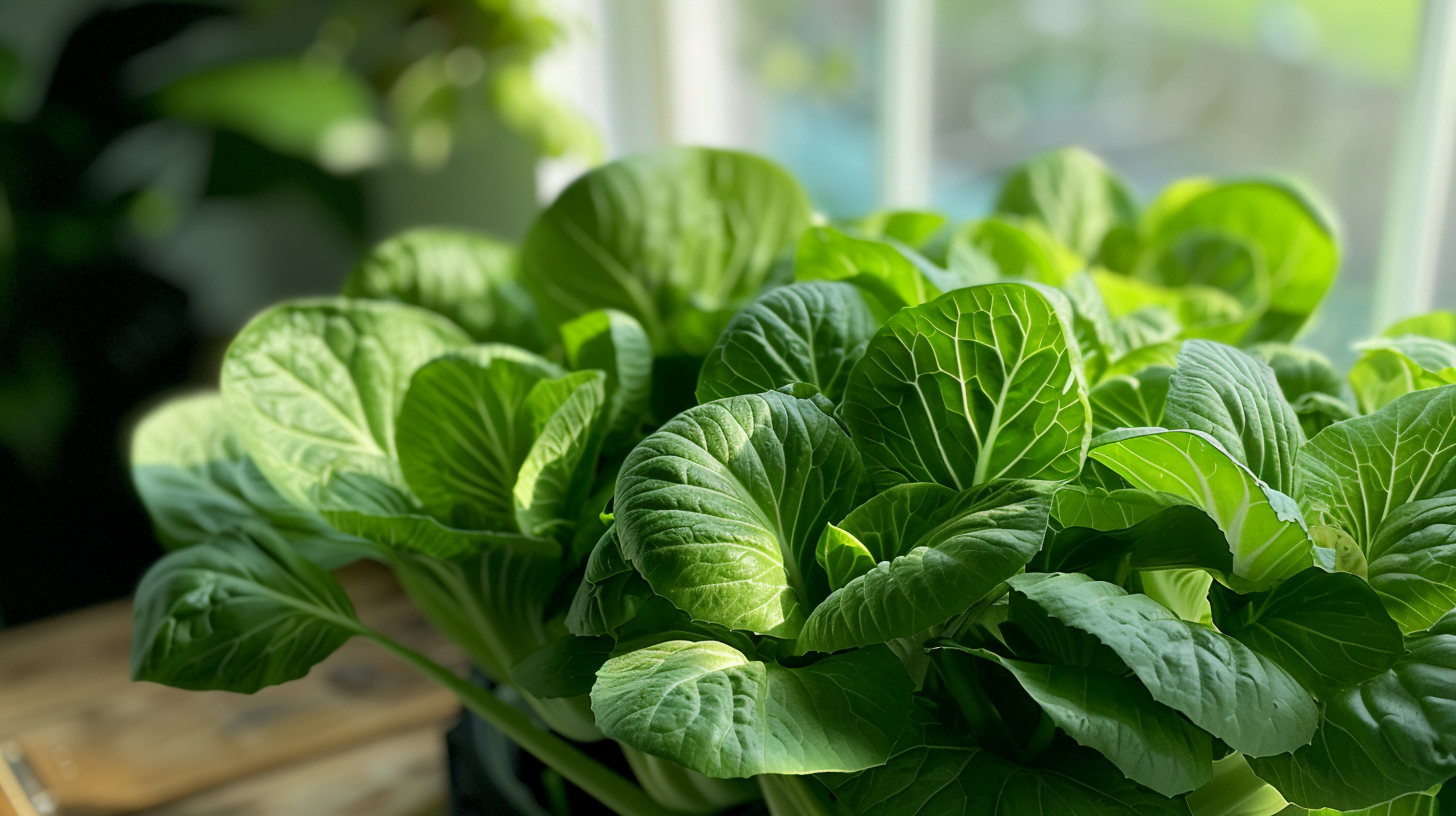Introduction
Hydroponic gardening has been revolutionizing the way we think about growing our own fruits and vegetables. Among the numerous queries from enthusiastic gardeners is the intriguing question: “Can I Grow Cucumbers Hydroponically?” This comprehensive guide delves into the world of hydroponic gardening, specifically focusing on the cultivation of cucumbers. Whether you’re a seasoned green thumb or a curious newcomer, this article offers valuable insights into growing cucumbers hydroponically, highlighting the advantages, techniques, and essential tips for successful cultivation. Join us as we explore the potential of hydroponic gardening and how it can transform your cucumber growing experience.
Hydroponic gardening has been growing in popularity as a way to grow fruits and vegetables faster, at higher yields, and with less water usage compared to traditional soil gardening. One of the most common veggies that can be grown hydroponically is cucumbers. With the right setup and care, you can grow cucumbers hydroponically right in your own home or greenhouse and enjoy fresh cukes all season long!
What are the Advantages of Growing Cucumbers Hydroponically?
There are several key benefits to growing cucumbers hydroponically instead of in soil:
- Faster growth: Hydroponic cucumbers mature up to 20% faster than soil grown. The nutrient solution feeds plants directly, accelerating growth.
- Higher yields: Hydroponic systems can produce up to 25% higher yields per square foot compared to soil. More oxygen to roots and optimal nutrients result in more fruit.
- Avoid soil-borne diseases: Hydroponics eliminates threats from soil-borne diseases, fungi, and pests. The sterile medium significantly reduces plant health issues.
- Precise control over nutrients: The hydroponic gardener has total control over the exact nutrient levels plants receive for optimal health.
- Grow year-round: With an indoor hydroponic setup, cucumbers can be grown year-round in any climate or season. No need to wait for summer!
- Water conservation: Hydroponics uses up to 90% less water than soil gardening since no water evaporates from the medium. Environmentally friendly gardening.
- Higher quality produce: Cucumbers grown hydroponically often have better flavor and texture since growth conditions are optimized.
- No weeding or digging: Hydroponics eliminates the most labor intensive parts of gardening – weeding and digging in dirt.
- Reduced pest pressure: Separation from soil significantly reduces fungus gnat, nematode and pathogen issues that plague soil gardens.
- Space optimization: Grow more cucumbers in less space. Hydroponics offers higher density yields per square foot.
- Easy for beginners: Hydroponic systems are easy to set up and simple to maintain once up and running. Great for first-time gardeners.
It’s clear why so many gardeners are making the switch to hydroponics for growing cucumbers and other vegetables. The benefits are numerous. Let’s look further into how to grow cucumbers successfully with hydroponic techniques.
Choosing the Right Cucumber Varieties for Hydroponics
While most cucumber varieties can grow hydroponically, some are better suited:
- Bush/compact varieties: Since space is limited, compact bush cucumbers are ideal. These include Saladbush, Picklebush, Spacemaster.
- Seedless: Seedless parthenocarpic cucumbers like Mini White save energy since the plant doesn’t produce seeds.
- Top varieties: Here are some top varieties for hydroponic cucumbers:
- Marketmore – disease resistant, all purpose
- Mini White – seedless, sweet flavor
- Picklebush – compact, for pickling
- Saladbush – container friendly
- Armenian – burpless and sweet
- High yielding hybrids: Hybrid varieties are bred specifically for higher yields in hydroponic growing environments. Some examples are Diva, Tasty Jade, Tyria.
- Disease resistant: Since hydroponics eliminates soil-borne diseases, look for varieties resistant to other common problems like anthracnose, angular leaf spot, and scab.
- Cold tolerant: If growing in an unheated space like a greenhouse, look for cucumber varieties bred to be cold tolerant.
- Heat tolerant: For outdoor hydroponic gardens in hot summer climates, heat tolerant variety like Golden Sunshine or Sweet Success do best.
- Mini cucumbers: Fun, tasty mini or cocktail cuke varieties like Mini Munch, Picklebush, and Mini White are great options.
Take some time researching the many cucumber varieties available to choose ones optimized for the conditions of your particular hydroponic garden. This will set your cucumbers up for success!
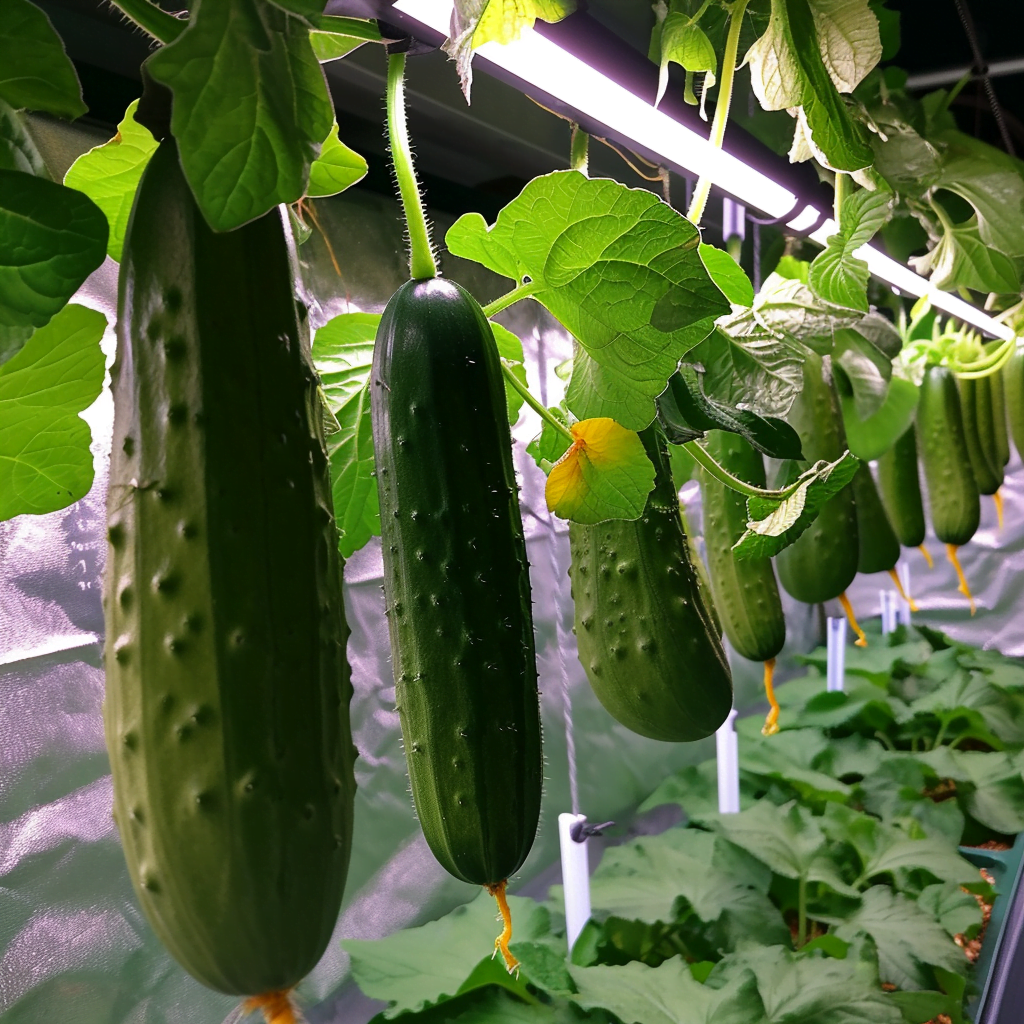
Cucumber Growing Mediums for Hydroponics
Hydroponic systems need a medium to support the plant’s roots and deliver the nutrient solution. Some common options are:
- Rockwool – made from spun rock fibers that provide excellent drainage and aeration. It has a near-neutral pH. Reusable for several years.
- Perlite – mined volcanic glass transformed into lightweight white balls. Perlite helps aerate the roots. It’s an inexpensive option.
- Coconut coir – made from coconut husks and a renewable, sustainable option. Holds moisture well while still draining. Has some buffering capacity.
- Growstones – made from recycled glass and provide great aeration. Can be reused for 5+ years since they are durable. Come in fun colors!
- Clay pellets – small, round clay pebbles that hold some moisture while still draining well. Reusable for years. Need to be “seeded” by soaking in pH’d water first.
- Rock wool cubes – started seedlings are easily transplanted into finished hydroponic systems in their cubes. anchor roots.
- Coco fiber pots – biodegradable option that can be planted directly into the system. Made of compressed coconut coir.
Considerations for choosing a medium:
- Irrigation style – drip, flood and drain, NFT channels?
- Cost – cheap perlite vs pricier Rockwool
- Sustainability – reusable vs single use?
- Drainage – need excellent aeration
- pH buffering – neutralize pH swings?
Testing different mediums to see which works best for your setup is recommended. Blending 2-3 materials can combine benefits.
Nutrient Solutions for Hydroponic Cucumbers
The nutrient solution provides all the essential elements cucumber plants need since they can’t get it from soil. The solution should contain both macronutrients (Nitrogen, Phosphorus, Potassium, Calcium, Sulphur, Magnesium) and micronutrients (Iron, Manganese, Boron, Zinc, Copper, Molybdenum).
Key factors for the nutrient mix include:
- EC – The electrical conductivity should fall between 2.0-3.5 mS/cm for hydroponic cucumbers. This measures the total dissolved salts.
- pH – The solution should be maintained at a pH between 5.5-6.5 for proper nutrient absorption.
- 2-part vs 3-part formulas – 2-part mixes are simpler for beginners. 3-part allows more precise control.
- Organic vs synthetic – Consider if you want natural mineral sources or lab-synthesized elements.
- Reservoir size – Make sure the reservoir can hold enough nutrient solution to supply plants between refresh cycles.
- Mixing equipment – Use chemical resistant buckets, measuring cups, and pumps for mixing nutrients.
- Strength – Follow manufacturer recommended dilution rates based on plant maturity. Start weaker and increase over time.
Some common hydroponic nutrient solution brand options:
- General Hydroponics Flora Series
- Botanicare Nutrients
- Dyna-Gro Foliage Pro
- FoxFarm Soluble Trio
- Humboldts Secret Nutrients
Mixing and managing the nutrients takes some work, but following a quality nutrient brand’s directions will give your cukes all they need to thrive! Monitor EC/pH levels and adjust strength over the growing period.
Hydroponic Systems for Cucumbers
There are many different types of hydroponic systems. The most common options for cucumbers are:
- Deep Water Culture (DWC) – Plants sit in buckets or tubs of aerated nutrient solution. Roots fully submerged. Simple, efficient system.
- Nutrient Film Technique (NFT) – Shallow stream of nutrients constantly flows through sloped channels. Roots dangle into the stream.
- Ebb and Flow – Plants sit in a tray that floods with nutrients then drains periodically. Passive system.
- Drip Systems – Nutrients drip onto the root zone from above. Requires a recovery system to reuse excess.
- Wick System – Nutrients are wicked to roots via absorbent wicks suspended in reservoir. Very passive option.
- Aeroponics – Nutrient mist surrounds the roots. Advanced high-yield system but higher upfront costs.
- Vertical systems – Optimize footprint by growing vertically. Great for small spaces.
- Hybrid systems – Combine methods like floating raft + NFT or vertical + drip irrigation.
The best system will depend on your goals, space, budget, and technical expertise. Test different methods to learn what works in your unique setting.
Setting Up Your Hydroponic System
Once you’ve selected the type of hydroponic system you want to use, it’s time to set it up! Here are some steps to take:
- Select a space – This could be a spare room, greenhouse, porch, or even a closet for small systems. Consider factors like temperature, sunlight, ventilation.
- Choose system components – Purchase all the required parts like tubs, buckets, reservoir, grow lights if needed. Quality matters.
- Assemble the system – Follow instructions to assemble the hydro system frames, PVC pipes, channels, pumps and plumbing.
- Add the medium – Pour clay pellets, Rockwool, perlite etc. into the grow sites where plants will go.
- Establish irrigation – Connect pumps and tubing to cycle the nutrient solution from reservoir through the system.
- Test the system – Run water through to check for leaks, flow rate, drainage, pH fluctuations. Troubleshoot issues.
- Culture the medium – Soak new media in pH adjusted water for 1-2 weeks before planting to stabilize.
- Add nutrient solution – Mix your nutrients and pour into reservoir. Check EC/pH levels are in range before planting.
- Take safety precautions – Install GFCI outlets if needed. Keep cords and pumps safe from water hazards.
Set aside ample time to set up your hydroponic system properly. Don’t cut corners or rush the process. A smooth running system will make the actual growing process much easier.
Seed Germination and Planting
Cucumber seeds can be started in a few different ways:
- Starter plugs – Plant 1-2 seeds in each plug containing soilless seed starting mix. Keep warm and moist until sprouted.
- Rockwool cubes – Soak cubes in pH adjusted water, plant a seed in each. Keep cubes moist until seedlings emerge.
- Direct sowing – Plant a few seeds directly into the final hydroponic grow sites if they already have a stable medium.
- Peat or paper pots – Start seeds in biodegradable pots filled with seed starting mix. Then place the pot into the system.
No matter the starting method, be sure to use fresh seed each season for best germination rates. Once the cotyledons (first seed leaves) open fully, seedlings are ready for transplant or to stay put if direct sowed.
Transplanting Seedlings
If you use the starter plug or cube method, you’ll need to transplant sprouts into the hydroponic system:
- Wait until seedlings have 2-3 true leaves before moving.
- Gently separate seedling from plug or cube. Try to keep some starter mix attached to roots.
- Make a hole in the hydroponic medium where you want to transplant.
- Place seedling into the hole, fill medium in around stem and water thoroughly.
- Support stems initially with ties or collar if needed while new roots establish.
- Keep newly transplanted seedlings in high humidity for a few days, then transition to normal growing conditions.
Follow proper transplanting procedures to minimize shock to the young seedlings during this sensitive stage.
Training and Pruning
As cucumber vines start vining out, some training and pruning is recommended:
- Trellis vines vertically using cotton strings, wires or mesh panels. This improves light exposure and airflow.
- Guide vines to grow horizontally along the trellis or system if vertical space is limited.
- Prune overcrowded growth to allow more light and air to reach fruits. But don’t overprune.
- Pinch or snip off any diseased or dying leaves, vines or fruits. Remove debris from system.
- Tuck wayward vines back into the vertical space. Use soft ties if needed.
- For indeterminate vines, prune off top 3-4 leaves after 4-5 nodes of fruits form. This discourages new vine growth.
Training and pruning your hydroponic cucumbers takes some practice. Find the right balance to optimize the shape and structure.
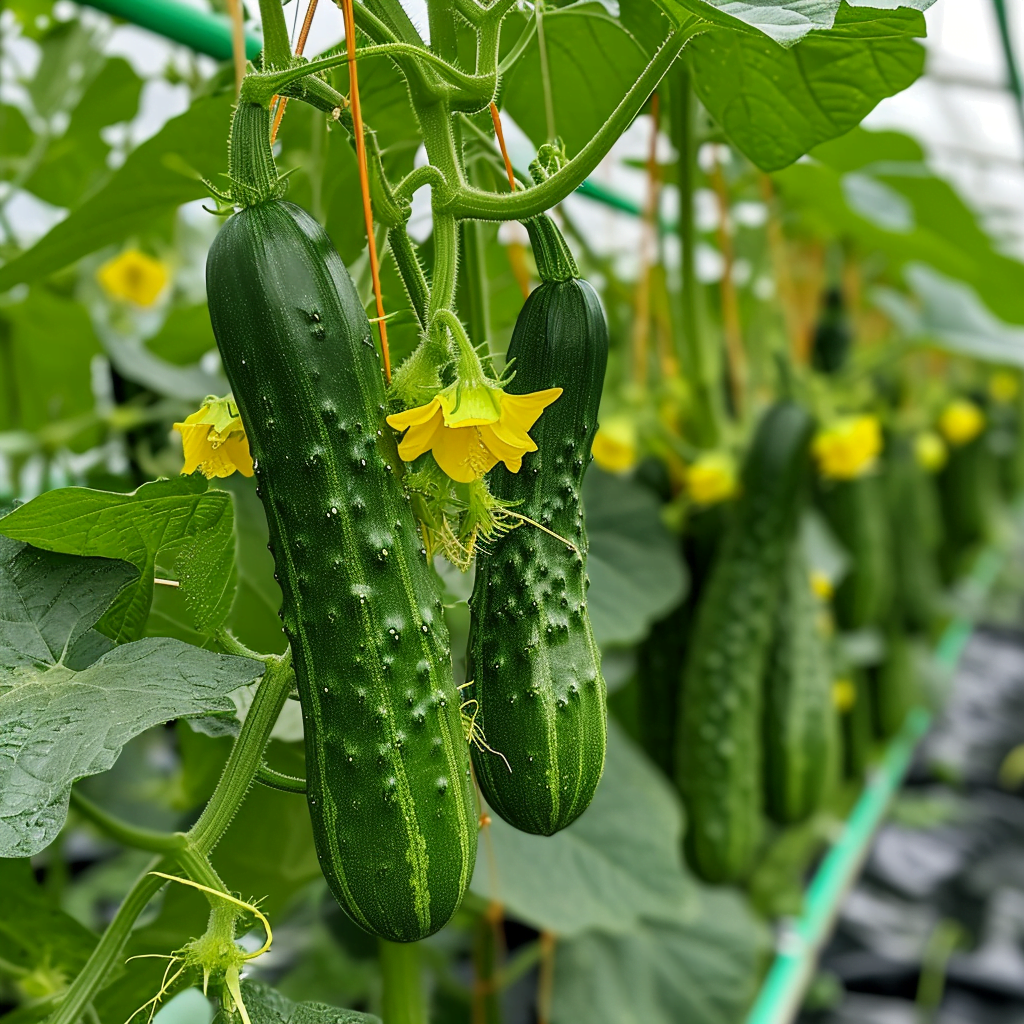
Pollinating Cucumber Blossoms
Since bees won’t have access to plants grown indoors, cucumbers grown hydroponically need a little human help with pollination:
- Female flowers have a tiny fruit structure at the base behind the petals.
- Male flowers grow directly on the stem. Identify newly opened males.
- Use a small paintbrush or cotton swab to gently collect pollen from male flowers.
- Brush or dab pollen onto the center pistil of newly opened female flowers.
- Tap flower stems daily to dislodge pollen and assist transfer between flowers.
- Not all flowers need to be pollinated for sufficient fruit set.
- Poor fruit set can also be caused by environmental stressors.
Consistent hand pollination and good growing conditions will allow your cucumber vines to produce abundantly.
Maintaining Ideal Environment
Cucumbers grow best hydroponically with these conditions:
- Air temperature between 75-85°F is ideal. Don’t let nights dip below 65°F.
- Water temperature between 68-77°F. Cooler slows growth.
- Lighting should provide 14-18 hours per day. LED grow lights work great indoors.
- Humidity around 50-60% is good. Increase to 60-80% for seedling stage.
- Ventilation is critical. Keep constant gentle airflow to strengthen plants and deter fungal diseases.
- pH between 5.5-6.5 in the nutrient reservoir. Adjust up or down as needed.
- EC electrical conductivity between 2.0-3.5 mS/cm. Increase over time as plants grow.
Monitor conditions daily and make adjustments to maintain these optimal ranges. Healthy cucumber plants = healthy yields.
Identifying and Preventing Pests/Diseases
Even in a hydroponic environment, some pests and diseases can become problematic:
Pests:
- Aphids – Tiny sap sucking pear shaped insects. Spray off with water or use ladybugs.
- Thrips – Super tiny elongated insects that rasp and feed on leaves. Use blue sticky traps.
- Mites – Microscopic web-making mites damage leaves. Release predatory mites.
- Whitefly – Flying white insects clump on undersides of leaves. Hang yellow sticky traps.
Diseases:
- Powdery mildew – White fungal spores coat leaves. Improve airflow to deter.
- Downy mildew – Yellow splotches on tops of leaves with white fuzz undersides. Lower humidity.
- Bacterial wilt – Leaves wilt and die rapidly. Control cucumber beetles which transmit disease.
- Root rot – Roots turn brown and slimy. Avoid overwatering and improve drainage.
Catch issues early before they can spread. Always remove any diseased plant material promptly.
Harvesting Cucumbers
- Cucumbers are ready for picking when fruits reach desired size, generally 6-8 inches long. Mini varieties when 2-4 inches.
- Harvest every 2-3 days to encourage plants to continue producing. The more you pick, the more they fruit!
- Use a sharp pair of pruning shears for clean, damage-free cuts. Snip the fruit off its short stem.
- Check lower leaf nodes for missed ripe cucumbers hidden by foliage.
- Pick early in the morning when plants are fully hydrated for longest shelf life.
- Handle fruits gently to avoid bruising. Use both hands to transfer to basket.
- Chill freshly harvested cucumbers as soon as possible to retain crispness.
Enjoy your fresh hydroponic cucumbers quickly for the best flavor and texture! Refrigerate extras in a perforated plastic bag for 5-7 days.
Troubleshooting Common Cucumber Problems
Even when following best practices for hydroponic cucumber growing, sometimes issues pop up. Here are some common problems and troubleshooting tips:
Slow Growth:
- Low water temperature – Increase reservoir temp to 70-80°F
- Low pH – Increase nutrient solution pH to 5.5-6.5 range
- Low EC – Too dilute nutrients. Gradually increase EC.
- Lack of light – Supplement with grow lights or reflectors
Weak Vines:
- Nutrient deficiency – Check and modify macronutrient strength
- Root rot – Improve drainage. Treat roots with beneficial bacteria.
- Overwatering – Allow medium to dry out between irrigations.
Poor Fruit Set:
- Inadequate pollination – Hand pollinate more flowers more frequently.
- Nitrogen deficiency – Increase nitrogen level in nutrient mix.
- Heat or cold stress – Maintain ideal temp range of 75-85°F.
- Overcrowding – Prune excess foliage blocking light and airflow.
Final Thoughts
Growing cucumbers hydroponically comes with many advantages over standard soil gardening. You can achieve faster growth, higher yields, healthier plants, and tastier cucumbers with the right hydroponic setup and care.
While it does take some equipment and effort to get your system started, hydroponic gardening is simpler in many ways than soil once everything is up and running. The ability to precisely control nutrients and conditions gives your plants what they need to thrive.
Follow this guide covering all aspects of successfully raising hydroponic cucumbers. Take time to research the best system, components, and practices for your particular growing environment. Expect some trial and error along the way.
The reward of juicy, homegrown cucumbers makes it all worthwhile! No matter the season or climate, hydroponics allows anyone to become a cucumber producer.
If soil gardening has let you down with low yields, diseases, and pesky critters, give hydroponics a try. Apply the techniques in this guide and you’ll be munching fresh cukes in no time. With proper care and feeding, hydroponic cucumbers will keep producing prolifically to meet demand.
The future of home food production is here with hydroponics. Take control of what you eat by growing your own crops indoors, year-round. Bring that farm fresh crunch directly to your kitchen!
